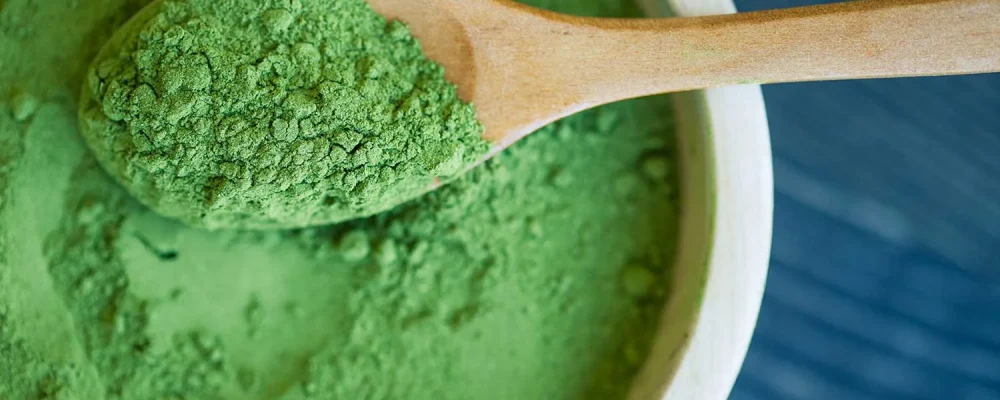Superfood powders have gained immense popularity in recent years, promising a convenient and nutritious way to boost your health. These colorful concoctions often contain exotic ingredients, leaving many consumers bewildered by what they consume. In this comprehensive guide, we’ll decode the labels of superfood powders, helping you understand the ingredients, their roles, and how to choose the best products for your needs.
Understanding Superfood Powder Ingredients
Superfood powders are a convenient way to boost your daily nutrition with various nutrient-packed ingredients. In this overview, we’ll explore the common ingredients found in these blends, their roles and benefits, and key considerations for choosing high-quality superfood powders.
Common Ingredients in Superfood Powders
Superfood powders have gained popularity due to their convenience and potential health benefits. These powders are typically made from various nutrient-rich ingredients, carefully selected to enhance overall well-being. Here are some common ingredients you’ll often find in superfood powders:
Nutrient-Dense Greens: One of the cornerstones of superfood powders is nutrient-dense greens. These include kale, spinach, wheatgrass, and spirulina. They’re rich in vitamins, minerals, and antioxidants that support overall health.
Berries and Fruits: Berries like acai, goji, blueberries, and fruits like bananas and cherries add natural sweetness and an abundance of vitamins and fiber to superfood powders.
Seeds and Nuts: Ingredients like chia seeds, flaxseeds, and almonds contribute healthy fats, protein, and fiber, promoting satiety and sustained energy.
Algae and Seaweed: Algae and seaweed, such as chlorella and kelp, provide essential trace minerals and support thyroid function and detoxification.
Herbal Extracts: Herbal extracts like ashwagandha and ginseng are often included for their adaptogenic properties, helping the body adapt to stress.
Adaptogens: Adaptogens, a class of herbs, help regulate the body’s stress response and enhance resilience to physical and mental stressors.
Probiotics and Enzymes: Some superfood powders contain probiotics and enzymes, supporting digestive health and nutrient absorption.
Plant-Based Proteins: Plant-based proteins from sources like peas, hemp, and brown rice offer a vegan-friendly protein boost.
The Role of Each Ingredient
The role of each ingredient in a superfood powder varies depending on its specific properties and benefits. Typically, superfood powders are designed to provide a concentrated source of essential nutrients, antioxidants, vitamins, and minerals.
For example, ingredients like spirulina or chlorella contribute valuable plant-based proteins and essential amino acids. Berries like acai or goji offer potent antioxidants, while greens such as kale or spinach provide a range of vitamins and minerals.
Superfoods like maca or ashwagandha may be included for their potential adaptogenic and energy-boosting properties. Combined in a superfood powder, each ingredient uniquely enhances overall health, vitality, and well-being.
Understanding these roles can help you choose a product that aligns with your nutritional needs and goals.
Assessing Ingredient Sources and Quality
When picking superfood powders, consider where the ingredients come from and how good they are for you. Look for ones with organic ingredients that aren’t sprayed with chemicals, and support brands that treat their suppliers fairly and sustainably.
If you see labels like “non-GMO” or “allergen-free,” that’s a good sign for your health. Trust brands with outside groups check their stuff, like USDA Organic and NSF certifications. Finally, please read the ingredient list to see what’s in it and how much. This way, you can choose superfood powders that are good for you, the people who make them, and the planet.
Decoding Superfood Powder Labels
When decoding superfood powder labels, understanding the nutritional information panel is essential. This panel provides crucial details about the product’s content that can help you make informed choices about your dietary intake. Here’s what you need to know:
Nutritional Information Panel
Now that we understand the ingredients let’s focus on the labels themselves.
Nutritional Information Panel: The nutritional information panel on the packaging provides vital details about the product’s content.
Serving Size and Servings per Container: This section tells you the recommended serving size and how many servings are in one container, helping you gauge how long it will last.
Calories and Macronutrient Breakdown: Learn how many calories are in a serving and the distribution of macronutrients (carbohydrates, protein, and fat).
Dietary Fiber and Sugars: Discover the amount of dietary fiber and sugars present in a serving, which can impact digestive health and blood sugar levels.
Vitamins and Minerals: Find out which vitamins and minerals are in the product and their respective quantities. This can help you address specific nutrient needs.
Ingredient List
Before we dive into understanding the ingredient list of your superfood powder, it’s essential to recognize that the ingredient list provides critical information about what you’re consuming. Here are some key points to keep in mind when reading and deciphering the ingredient list:
Descending Order of Ingredients: Ingredients are listed in descending order by weight, with the most prominent ingredient first. Pay attention to what comes first, as it makes up the bulk of the product.
Common and Scientific Names: Sometimes, scientific names are used alongside common names. Familiarize yourself with both to identify ingredients accurately.
Identifying Whole vs. Synthetic Ingredients: Some superfood powders include synthetic versions of natural ingredients. Opt for products that use whole, natural sources whenever possible.
Allergen Warnings
If you have food allergies, paying attention to allergen warnings is essential.
Recognizing Potential Allergens: Check if the product contains common allergens like nuts, soy, or dairy, even if they aren’t primary ingredients.
Cross-Contamination Risks: Manufacturers should indicate if there’s a risk of cross-contamination with allergens during production.
Precautions for Individuals with Allergies: Contact the manufacturer to inquire about their allergen control measures if you have severe allergies.
Claims and Marketing Jargon
Superfood powder labels often feature enticing health claims and marketing jargon. It’s essential to differentiate between marketing hype and factual information.
Differentiating Between Facts and Marketing Hype: Don’t be swayed solely by flashy claims. Look for substantiated information supported by scientific evidence. Do your research.
Understanding Health Claims and Benefits: If a product claims to provide specific health benefits, such as immune support or energy enhancement, research the ingredients to see if they support these claims [1].
Recognizing Misleading Terminology: Beware of terms like “miracle cure” or “magic formula.” These are often red flags for misleading marketing.
Additional Label Elements
In addition to nutritional information and ingredient lists, superfood powder labels may include other helpful details.
Usage Instructions and Serving Recommendations: Follow the recommended usage instructions and serving sizes to maximize the benefits and avoid overconsumption.
Storage Conditions and Shelf Life: Proper storage conditions and shelf life information help maintain the product’s quality and safety.
Contact Information for the Manufacturer: The manufacturer’s contact information is essential if you have questions or concerns about the product.
Batch Numbers and Product Tracking: Batch numbers aid in quality control and product traceability, allowing for swift action in case of a recall.
Incorporating Superfood Powders into Your Diet

Before diving into how to incorporate superfood powders into your diet, it’s essential to consider your dietary needs and goals. Superfood powders offer a versatile way to enhance your nutrition, but understanding your specific objectives will help you make the most of them. Here are some key considerations:
Considering Dietary Needs and Goals
Now that you’re well-versed in superfood powders and their labels let’s explore how to incorporate them into your diet.
Considering Dietary Needs and Goals: Consider your dietary needs and goals before adding superfood powders to your routine. Superfoods can be an easy and effective way to fill in nutritional gaps.
Weight Management and Energy Boosting: Superfood powders can support weight management by adding nutrients without excess calories. They can also provide an energy boost.
Athletic Performance and Muscle Recovery: Athletes often use superfood powders to aid in muscle recovery and performance, thanks to their nutrient density.
Digestive Health and Gut Balance: Probiotics and dietary fiber in some superfood powders can promote digestive health and balance in the gut.
Immune Support and Antioxidant Benefits: Certain superfood ingredients are known for their immune-boosting and antioxidant properties.
Culinary Applications of Superfood Powders
Superfood powders can be a versatile addition to your kitchen.
Adding to Smoothies and Shakes: The most common way to consume superfood powders is by adding them to smoothies and shakes for a quick nutrient boost.
Mixing with Yogurt and Oatmeal: Mixing superfood powders with yogurt or oatmeal can be a delicious and nutritious breakfast option.
Baking and Cooking with Superfood Powders: Incorporate superfood powders into baking or savory dishes like soups and sauces.
Creating Nutrient-Rich Sauces and Dressings: Blend superfood powders into salad dressings and sauces to enhance their nutritional value.
Combining Superfood Powders with Balanced Meals
While superfood powders offer many benefits, it’s essential to maintain a balanced diet.
Planning Balanced and Nutrient-Dense Meals: Ensure your meals include a variety of whole foods to provide a wide range of nutrients.
Avoiding Overconsumption and Imbalance: While superfood powders are beneficial, don’t rely solely on them. Balance is key.
Monitoring the Variety of Nutrients in Your Diet: Monitor your nutrient intake to avoid deficiencies or excesses.
Potential Precautions and Interactions
Superfood powders are generally safe, but some precautions should be considered.
Consulting with a Healthcare Professional: If you have health conditions or are taking medications, consult a healthcare professional before adding superfood powders to your diet.
Possible Interactions with Medications: Some ingredients may interact with medications, so be cautious and seek advice if you’re on prescription drugs.
Safe Usage During Pregnancy and Lactation: Pregnant and lactating individuals should be extra cautious and consult a healthcare provider regarding superfood powder consumption.
Exploring the Science Behind Superfood Powders

Research and Evidence
Scientific research has uncovered the nutritional riches in superfood powder ingredients like leafy greens, berries, and seeds, providing a solid foundation for understanding their health benefits. Clinical trials with real people further demonstrate how superfoods can improve cognitive function and reduce the risk of chronic diseases [2].
However, it’s crucial to remember that while studies often show a connection between superfood consumption and health improvements, this doesn’t necessarily mean one causes the other; careful experiments are needed to establish causation.
Criticisms and Controversies
Criticisms and controversies around superfoods include the lack of clear standards for what qualifies as a “superfood,” making it confusing for consumers to identify truly beneficial ingredients in superfood powders.
Additionally, some superfood products make health claims that need better support from scientific research, emphasizing the importance of scrutinizing claims and ingredient lists. It’s also crucial to balance skepticism and appreciation for superfoods, understanding that they are part of a broader health strategy and not magical fixes for all health issues.
Integrating Superfood Powders into a Holistic Lifestyle
Incorporating superfood powders into your diet is like adding a useful tool to your overall wellness plan. They’re packed with nutrients, but remember, they can’t replace a balanced diet, exercise, stress management, and good sleep. Instead, think of them as helpers that go hand in hand with these other healthy habits.
A holistic approach to health means finding balance in different aspects of your life. Don’t rely only on superfoods; use them to boost your meals filled with whole, diverse foods. And when you choose superfoods, think about their long-term impact, too. Some come from faraway places, so pick brands that care about ethical sourcing and sustainability. By doing so, you’re taking care of yourself and our planet.
FAQs
What are Superfood Powders?
Superfood powders are concentrated blends of nutrient-rich ingredients that enhance health and well-being. They’re like a natural boost for your body.
Why Are Superfood Powders Popular?
Superfood powders offer a convenient way to load up on nutrients quickly and easily. They’re often marketed as a shortcut to better health in our fast-paced world.
How Are Superfood Powders Used?
Superfood powders are incredibly versatile. You can mix them into smoothies, shakes, yogurt, and oatmeal and even use them in cooking and baking. It’s like having a secret ingredient to level up your recipes.
Can Superfood Powders Replace a Balanced Diet?
Superfood powders can’t replace a balanced diet but can enhance it. Think of them as the sidekick to your everyday meals.
Final Thoughts
Superfood powders can be a valuable addition to your diet, but they’re not a magic potion. By understanding the ingredients, decoding labels, and making informed choices, you can harness their potential benefits while keeping a balanced and holistic approach to your well-being. Remember, good health isn’t about a single superfood; it’s about the sum of your daily choices, from what you eat to how you move and manage stress. So, enjoy your superfood powders, but do so with knowledge and mindfulness. After all, it’s your health, and you’re in charge of decoding what’s right for you.
Source
[1] Barsby, J. P., Cowley, J. M., Leemaqz, S. Y., Grieger, J. A., McKeating, D. R., Perkins, A. V., Bastian, S. E. P., Burton, R. A., & Bianco-Miotto, T. (2021). Nutritional properties of selected superfood extracts and their potential health benefits. https://www.ncbi.nlm.nih.gov/pmc/articles/PMC8628624/
[2] Proestos, C. (2018). Superfoods: Recent Data on their Role in the Prevention of Diseases. https://www.foodandnutritionjournal.org/volume6number3/superfoodsrecent-data-on-their-rolein-the-prevention-of-diseases/
RV Team
* Reviewology is in partnership or collaborates with top brands highlighted on this site, including those occupying the top ranking positions.
Additionally, we earn affiliate commissions from products showcased on this website when you make a purchase through the provided links on Amazon or the company website directly.
We appreciate your support using our links to purchase your favorite brands or newly discovered brands.
Latest updates
I Thought I’d Always Feel Tired, Fat, and Forgotten—Until This
310 Greens vs AG1
The Truth About 310 Greens: A No-Nonsense Review of This Popular Supplement
Popular
I Thought I’d Always Feel Tired, Fat, and Forgotten—Until This
310 Greens vs AG1
The Truth About 310 Greens: A No-Nonsense Review of This Popular Supplement
© 2024 Reviewology. All Rights Reserved.
